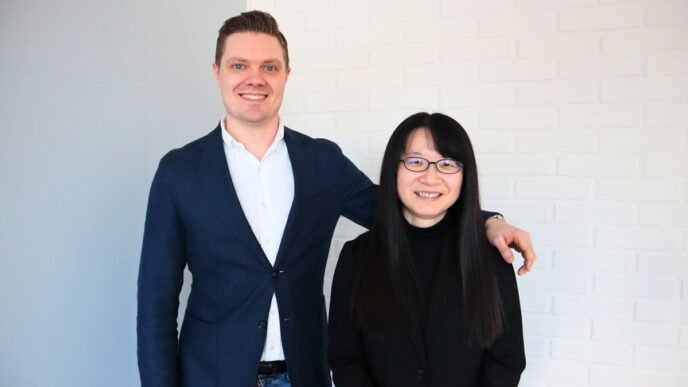Altair (Nasdaq: ALTR), a global leader in computational intelligence, is proud to announce the launch of Altair® HyperWorks® 2025, a first-class design and simulation platform to solve the world's most complex technical challenges. At the forefront of this launch is a bold vision for the future of product development: a world without prototypes, where designs are perfected in the virtual domain before reaching the physical world. By combining the power of artificial intelligence (AI), high-performance computing (HPC) and multiphysics simulation with cloud-based scalability and digital traceability, Altair HyperWorks 2025 is more than a simulation platform – it's a platform for innovation.
“Altair HyperWorks 2025 builds on four decades of Altair's expertise in simulation, design and optimization,” said James R. Scapa, founder and CEO, Altair. “By integrating advanced simulation technology with AI and machine learning, automation, open architecture and a connected digital traceability, the platform accelerates design processes, fosters scalable collaboration in the cloud, and empowers teams to deliver smarter, faster, and more sustainable solutions. It’s another step in our vision of democratized computational intelligence.”
AI-Driven Engineering and Optimization
Altair continues to distance itself from the competition with its unmatched AI-powered engineering, machine learning and optimization capabilities. Physical prediction models powered by new transformer architectures deliver accurate simulations, even with limited or incomplete data. Machine learning models act as solvers, reducing simulation times while improving reliability. AI-based ROM modeling (Reduced Order Modeling) enables faster and more accurate simulations of nonlinear systems, providing insights early in the design process.
Cloud-based and SaaS Solutions
Altair embraces the shift to cloud-based and SaaS solutions, democratizing access to advanced engineering simulations with flexible infrastructure. The new Altair® DSim™The SaaS solution makes it possible for semiconductor-designers to run unlimited number of simulations with a pay-as-you-go model, which eliminates upfront costs and provides the freedom to scale as needed. Altair One® cloud innovation gateway improves collaboration by providing instant access to simulation applications, data and HPC resources.
Automation and Customization
New opportunities for automation, including Python APIs, eliminates repetitive tasks, streamlines data management, and simplifies report generation. For large-scale projects, advanced batching and task libraries reduce the time spent on complex tasks. The platform's many options allow users to tailor simulations for unique applications, such as modeling particle interactions within drug or agriculture.
Additional Highlights
Digital Engineering: A Connected Ecosystem
By connecting data, teams and processes across the product lifecycle, Altair delivers a more integrated approach to design and simulation. Enhanced digital twin and digital traceability technologies ensure a seamless data flow and align virtual models with physical systems. To meet sustainabilityTarget provides private material databases with a single source of truth for material selection, including tools for analyzing carbon dioxide (CO₂) impact.
Efficient numerical solvers
Altair® OptiStruct® simplifies structural simulations through a “one model, one solver” approach that enables smooth transitions between implicit and explicit analyses. By using Altair® PhysicsAI™ models as solvers, users can replace traditional numerical solvers with AI-powered alternatives, accelerating simulations while maintaining accuracy.
Multiphysics Simulation for Electronics
New updates simplify handling of thermal, electromagnetic, and power interactions in electronics design. ECAD meshing improvements speed up cooling and sustainability analyses, while improved electromagnetic-thermal coupling provides better predictions of system performance. Power electronics simulation updates optimize motor control and converter modeling for improved efficiency.
CAE as a Design Tool
Altair® Inspire™ continues to make CAE significant by offering design-friendly computational physics for structural, fluid and motion analysis – along with workflows for manufacturability and optimization. Altair® CoPilot™ Beta – an intelligent AI assistant embedded in Inspire – provides guidance, Q&A and workflow support, while new tools such as image plane for sketching and extended implicit modeling streamline geometric creation and exploration.
Advanced Material Simulation
As material complexity, sustainability requirements, and AI-driven workflows evolve, Altair's materials solutions give users the tools they need to lead. With Altair's material solutions organizations can manage, standardize, and simulate material data with high fidelity for advanced materials such as composites, polymers, and additive manufacturing. Engineers can optimize designs, achieve sustainability goals with CO₂ analysis, and reduce the cost of physical testing by using AI to supplement missing data.
Particle simulation
Altair continues to define the industry standard for the discrete element method (DEM) by delivering new physics models – Fibers Bonding Model, Liquid Bridge Model and updated Linear Elastic Bond Model (LEBM) with polyhedral particles – that improve workflows and enable realistic representation of fibers and particles for applications in agriculture, batteries and pharmaceuticals.
To learn more about Altair HyperWorks and see the full list of enhancements, visit https://altair.com/hyperworks-2025.
















